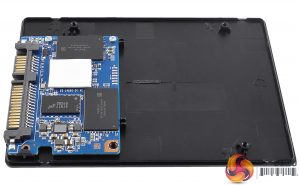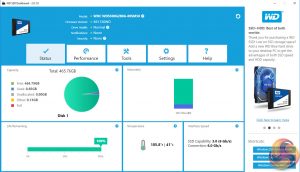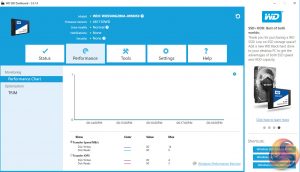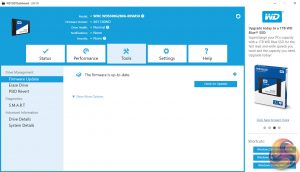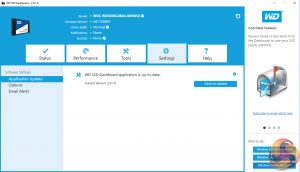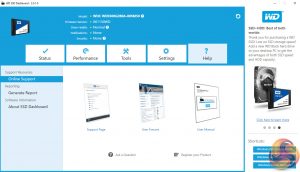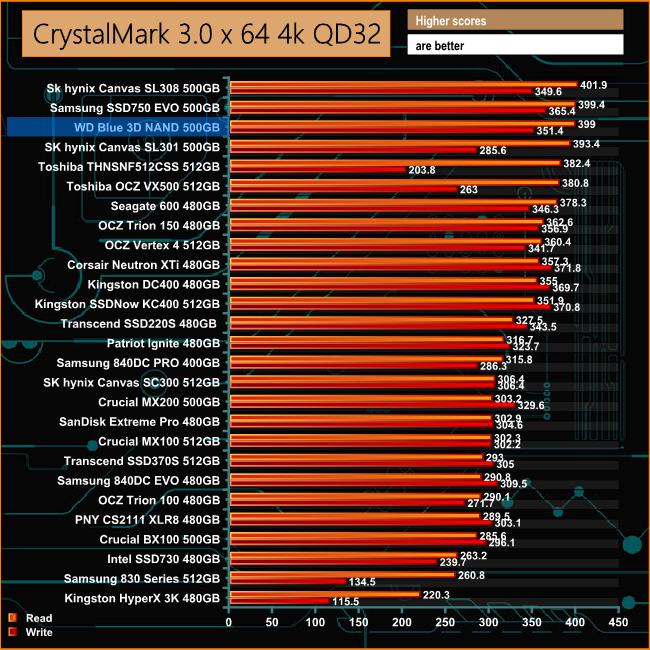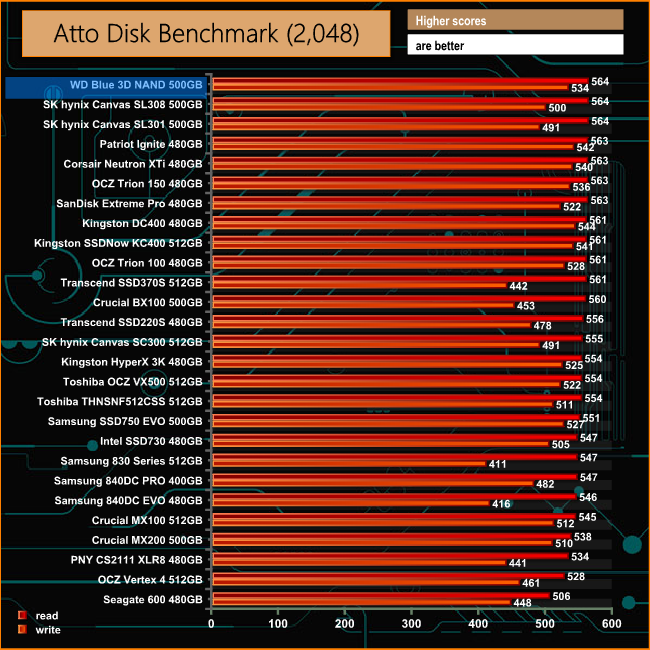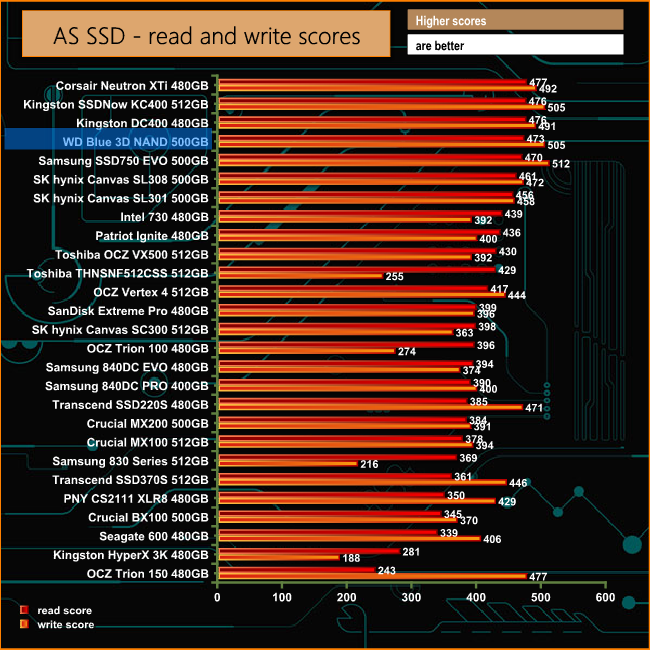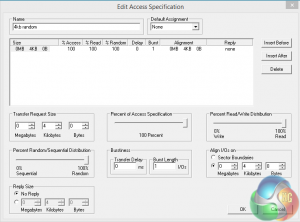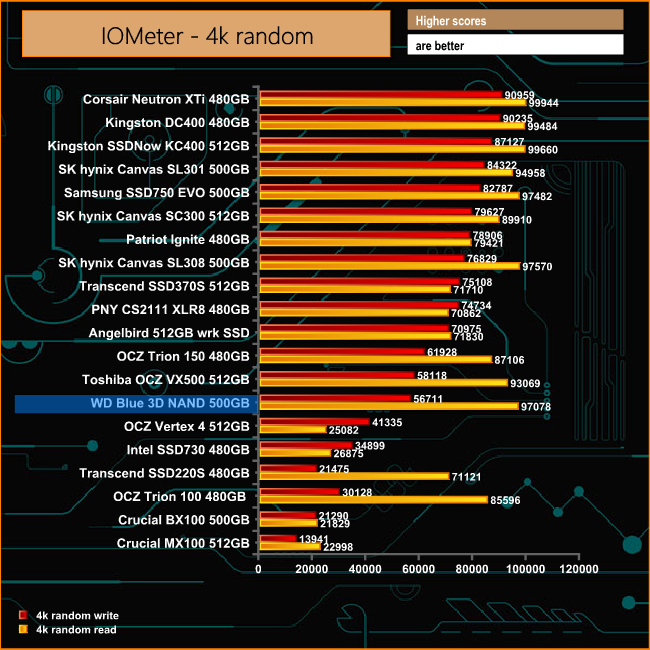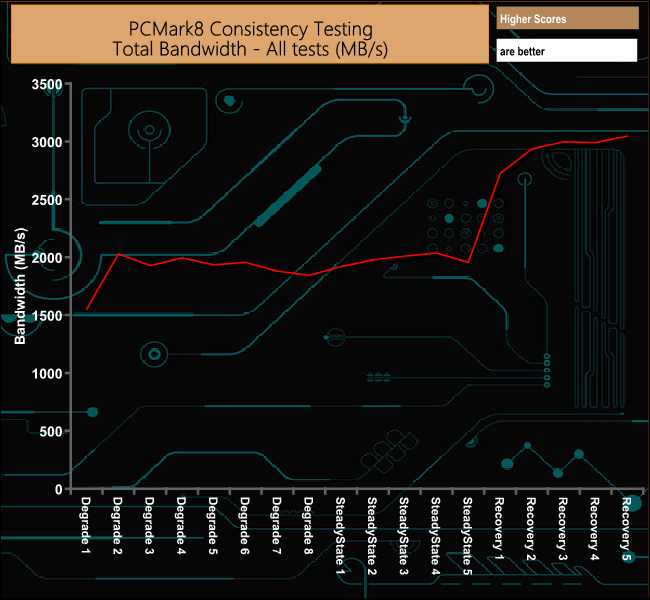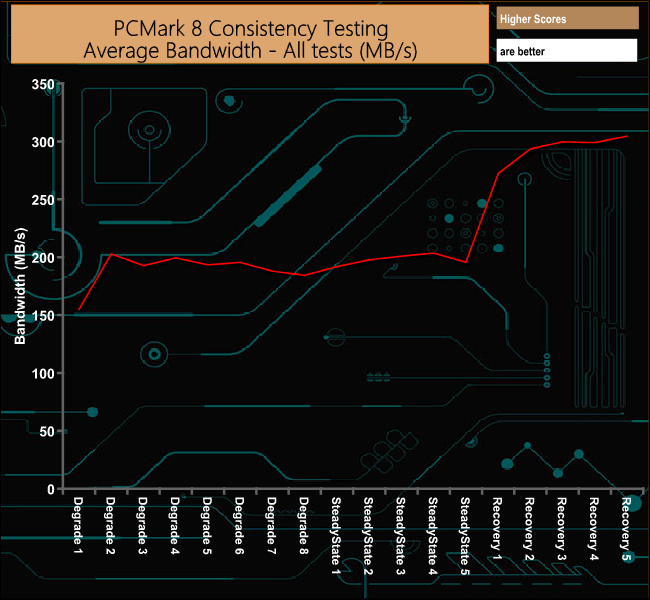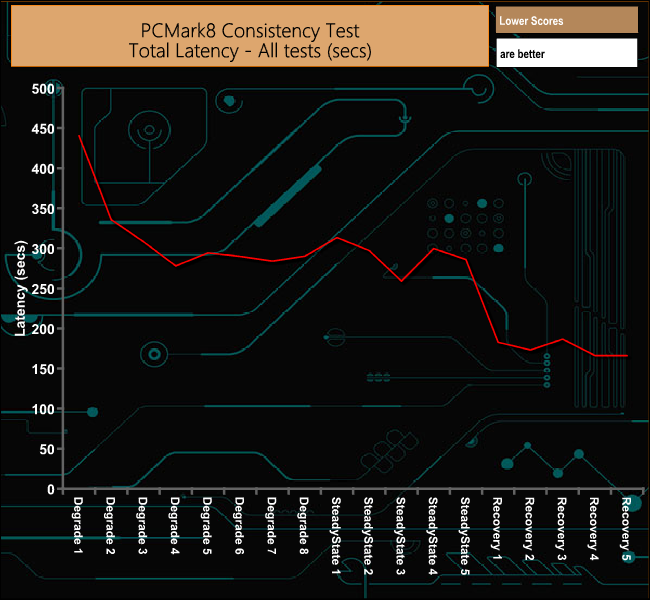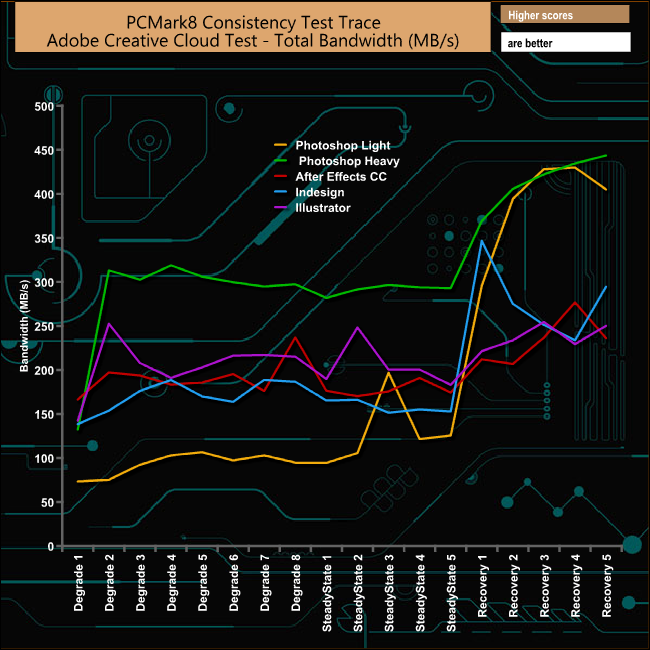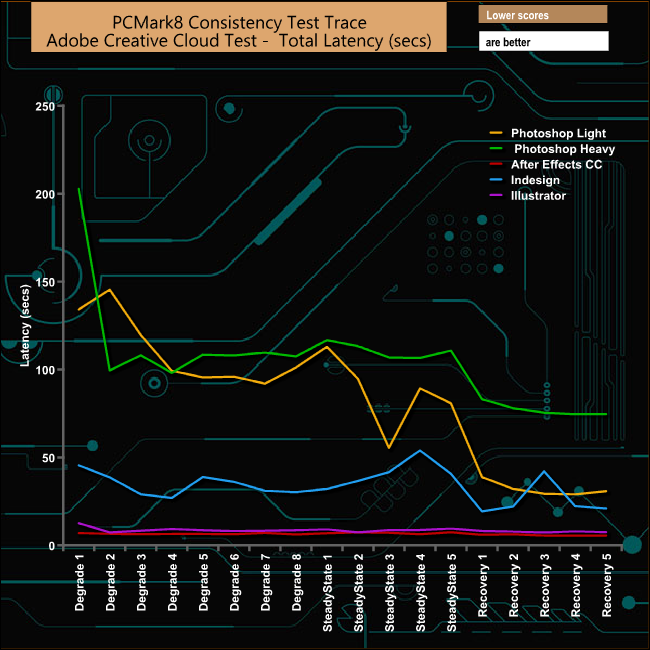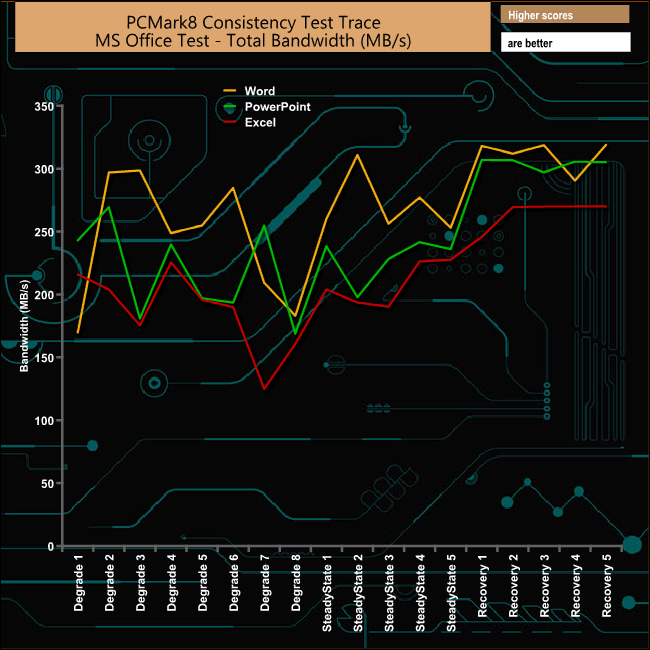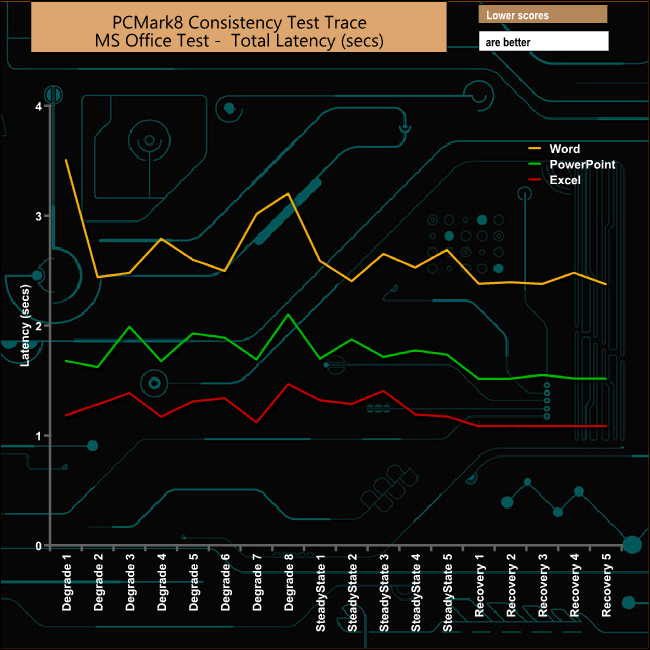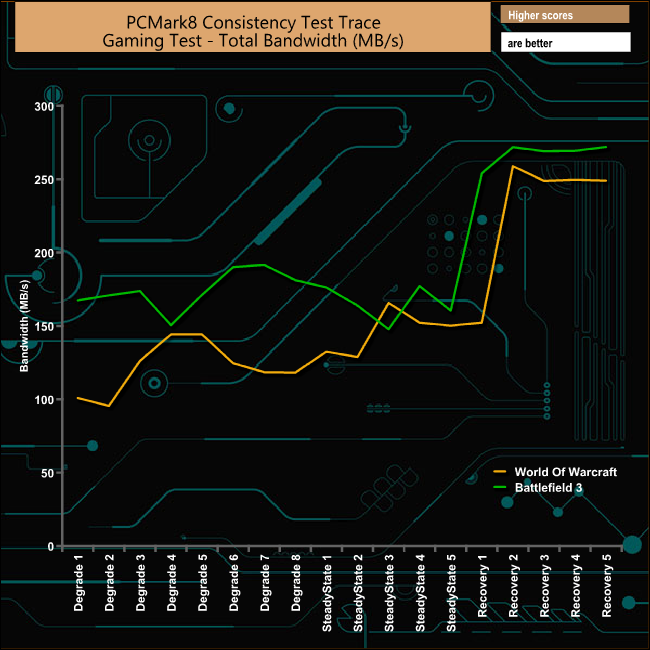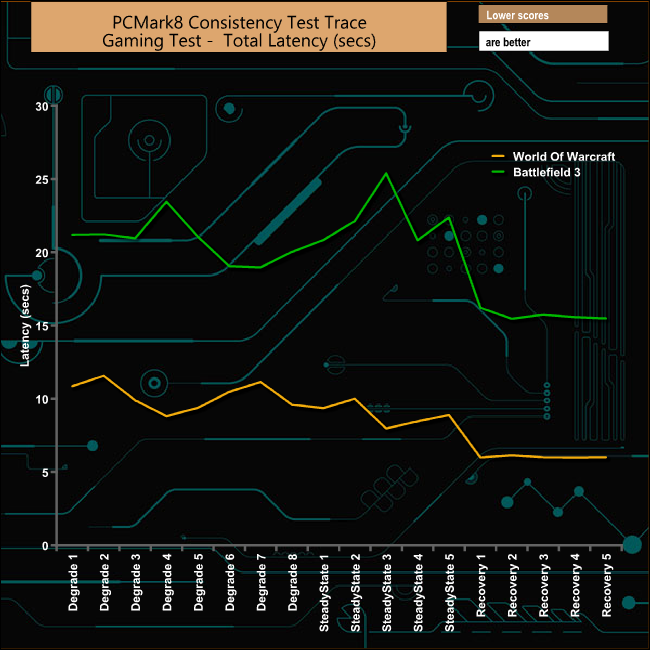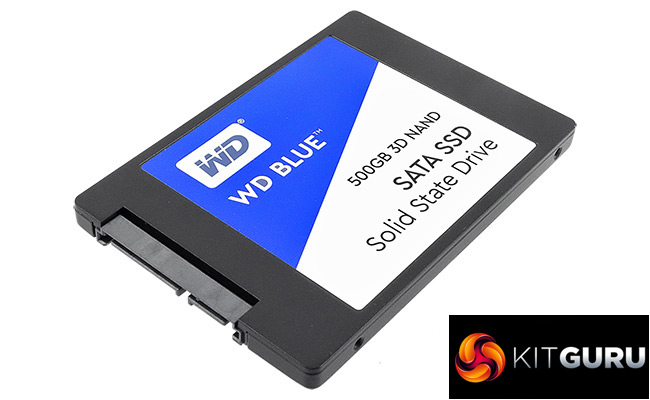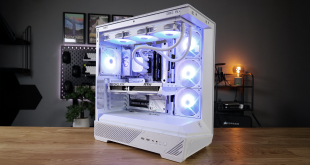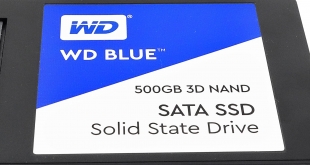
The first WD Blue SSD to see the light of day didn't really cause that many ripples in the market. Now we have the second generation WD Blue SSD and it's a totally different animal. This time people will take notice not least because it uses leading edge 64-layer BiCS3 3D TLC NAND technology.
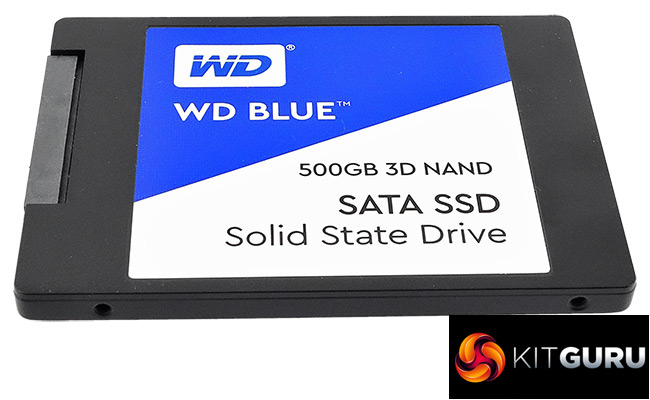
The new WD Blue 3D NAND drive uses a combination of 64-layer 512Gb 3D TLC flash and a Marvell 88SS1074 controller. It comes in 250GB, 500GB, 1TB and 2TB capacities and in two formats, standard 2.5in 7mm and SATA M.2 2280.
The quoted Sequential read/write figures for the 500GB version of the WD Blue 3D NAND are 560MB/s and 530MB/s respectively. These are the same figures for the 1TB and 2TB drives, the 250GB drive has slightly lower read/writes at 550MB/s and 525MB/s respectively. Random 4K figures are stated at up to 95,000 IOPS for reads and up to 84,000 IOPS for writes. The read figure of 95,000 IOPS is the same for all four drives in the range with the 250GB drive write performance dropping to 81,000 IOPS.
Endurance for the 500GB drive is quoted at 200TBW. The rest of the range have endurance figures quoted as 500TBW for the 2TB flagship drive, 400TBW for the 1TB drive and 100TBW for the 250GB drive. WD back the drive with a 3-year limited warranty.
Physical Specifications:
Usable Capacities: 250GB, 500GB, 1TB and 2TB
NAND Components: 64-layer 512Gb 3D TLC NAND
Interface: Serial ATA (SATA) 6Gb/s (SATA III)
Form Factor: 2.5in 7mm
NAND Controller: Marvell 88SS1074
Dimensions: 69.85 x 100.2 x 7mm
Drive Weight: 57.9g
Firmware Version: X61130WD
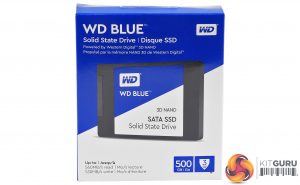
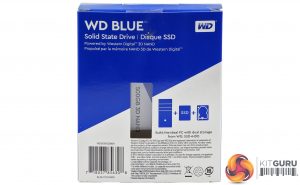
WD's Blue 3D NAND drive comes in a compact blue flashed box with a large image of the drive on the front along with its sequential read/write speeds and its capacity. There is also a logo in the bottom right hand corner noting that the drive has a 3-year warranty. The rear of the box has a window in it so you can see the drive. There's also a small diagram showing an idea of a dual storage solution for a PC.
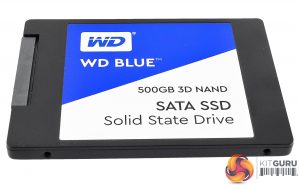
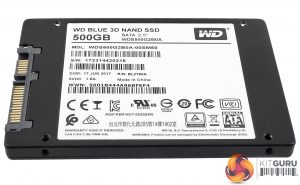
The drive is built on a standard 2.5, 7mm format but it is also available as a 2280 M.2 drive.
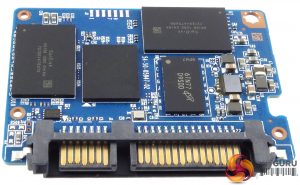
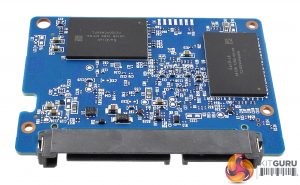
The 500GB WD Blue 3D NAND's PCB is tiny. The top side of the PCB holds two 128GB packages of BiCS3 3D TLC NAND, a Micron cache chip and under a thermal pad the Marvell 88SS1074 controller. The reverse side of the PCB is home to two more packages of NAND.
The Marvell 88SS1074 controller is a 28nm, 4 channel controller which uses the company's third generation error-correcting, low-density parity check (LDPC) technology. It supports 15/16nm MLC/TLC as well as 3D NAND.
WD's SSD management utility goes under the name of WD SSD Dashboard. With it, you can see how much of the drive’s capacity is left and how the storage is being used, monitor the remaining life of the drive and the temperature it’s running at.
The performance section has a useful real-time chart that monitors the drives performance in 5-minute time slots in either MB/s or IOPS.
The tools page is where you can check for firmware updates and install them either via a bootable USB drive, CD/DVD or by using a file downloaded to the PC. The help page provides links to WD’s support page for the drive and to the WD user forums or download the product manual.
Also available via a download from WD’s site is Acronis True Image WD Edition software for cloning and backing up drives.
For testing, the drives are all wiped and reset to factory settings by HDDerase V4. We try to use free or easily available programs and some real world testing so you can compare our findings against your own system.
This is a good way to measure potential upgrade benefits.
Main system:
Intel Core i7-7700K with 16GB of DDR4-3200 RAM, Sapphire R9 390 Nitro and an Asus Prime Z270-A motherboard.
Other drives
Corsair Neutron XTi 480GB
Crucial BX100 500GB
Crucial MX100 512GB
Crucial MX200 500GB
Intel SSD730 480GB
Kingston HyperX 3K 480GB
Kingston DC400 480GB
Kingston SSDNow KC400 512GB
OCZ Trion 100 480GB
OCZ Trion 150 480GB
Patriot Ignite 480GB
PNY CS2111 XLR8 480GB
Samsung SSD750 EVO 500GB
Samsung 830 512GB
Samsung 840DC EVO 480GB
Samsung 840DC PRO 400GB
SanDisk Extreme Pro 480GB
Seagate 600 480GB
SK Hynix Canvas SC300 512GB
SK Hynix Canvas SL301 500GB
SK Hynix Canvas SL308 500GB
Toshiba THNSNF512GCSS 512GB
Toshiba OCZ VX500 512GB
Transcend SSD220S 480GB
Transcend SSD370S 512GB
Software:
Atto Disk Benchmark.
CrystalMark 3.0.3.
AS SSD.
IOMeter
All our results were achieved by running each test five times with every configuration this ensures that any glitches are removed from the results. Trim is confirmed as running by typing fsutil behavior query disabledeletenotify into the command line. A response of disabledeletenotify =0 confirms TRIM is active.
CrystalDiskMark is a useful benchmark to measure theoretical performance levels of hard drives and SSD’s. We are using V3.0.3.
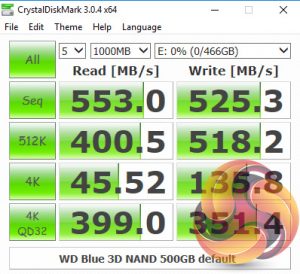
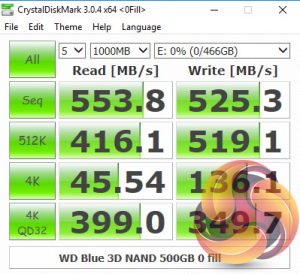
WD's Blue 3D NAND shows good performance at deep queue depths. Its performance in the CrystalDiskMark test puts it straight in at number three in the chart. Looking at both benchmark result screens, the controller has no real preference on the type of data it's asked to handle.
The ATTO Disk Benchmark performance measurement tool is compatible with Microsoft Windows. Measure your storage systems performance with various transfer sizes and test lengths for reads and writes. Several options are available to customize your performance measurement including queue depth, overlapped I/O and even a comparison mode with the option to run continuously.
Use ATTO Disk Benchmark to test any manufacturers RAID controllers, storage controllers, host adapters,hard drives and SSD drives and notice that ATTO products will consistently provide the highest level of performance to your storage.
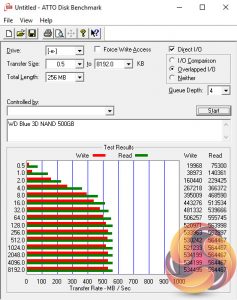
The official Sequential read/write figures for the 500GB version of the drive are 560MB/s and 530MB/s respectively, figures that were bang on the money when the drive is tested with the ATTO benchmark – the tested drive producing 564MB/s for reads and 534MB/s for writes. The WD Blue 3D NAND is at the top of the ATTO performance graph for this class of drive, albeit by a very fine margin.
AS SSD is a great free tool designed just for benching Solid State Drives. It performs an array of sequential read and write tests, as well as random read and write tests with sequential access times over a portion of the drive. AS SSD includes a sub suite of benchmarks with various file pattern algorithms but this is difficult in trying to judge accurate performance figures.
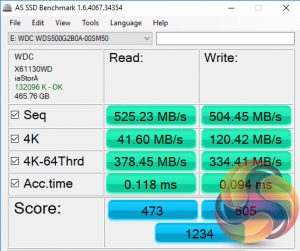
Again the WD Blue 3D NAND drive shows strong read and write performance in the much more stringent AS SSD benchmark.
IOMeter is another open source synthetic benchmarking tool which is able to simulate the various loads placed on hard drive and solid state drive
technology.
We test with both random read and write 4k tests, as shown above. There are many ways to measure the IOPS performance of a Solid State Drive, so our results will sometimes differ from manufacturer’s quoted ratings. We do test all drives in exactly the same way, so the results are directly comparable.
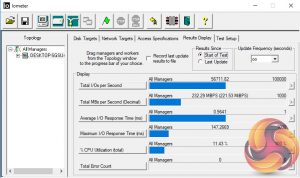
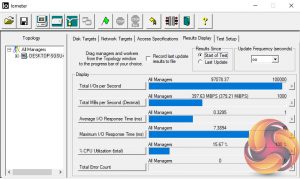
Under test conditions the drive produced a random 4K read speed that was a little faster than the official 95,000 IOPS at 97,078 IOPS. Unfortunately the same can't be said for the random writes which at 56,711 were some way off the official 84,000 IOPS.
Futuremark’s PCMark 8 is a very good all round system benchmark but it’s Storage Consistency Test takes it to whole new level when testing SSD drives. It runs through four phases; Preconditioning, Degradation, Steady State, Recovery and finally Clean Up. During the Degradation, Steady State and Recovery phases it runs performance tests using the 10 software programs that form the backbone of PCMark 8; Adobe After Effects, Illustrator, InDesign, Photoshop Heavy and Photoshop Light, Microsoft Excel, PowerPoint, Word, Battlefield 3 and World of Warcraft. With some 18 phases of testing, this test can take many hours to run.
Preconditioning
The drive is written sequentially through up to the reported capacity with random data, write size of 256 × 512 = 131,072 bytes. This is done twice.
Degradation
Run writes of random size between 8 × 512 and 2048 × 512 bytes on random offsets for 10 minutes. It then runs a performance test. These two actions are then repeated 8 times and on each pass the duration of random writes is increased by 5 minutes.
Steady State
Run writes of random size between 8 × 512 and 2048 × 512 bytes on random offsets for final duration achieved in degradation phase. A performance test is then run. These actions are then re-run five times.
Recovery
The drive is idled for 5 minutes. Then a performance test is run. These actions are then repeated five times.
Clean Up
The drive is written through sequentially up to the reported capacity with zero data, write size of 256 × 512 = 131,072 bytes.
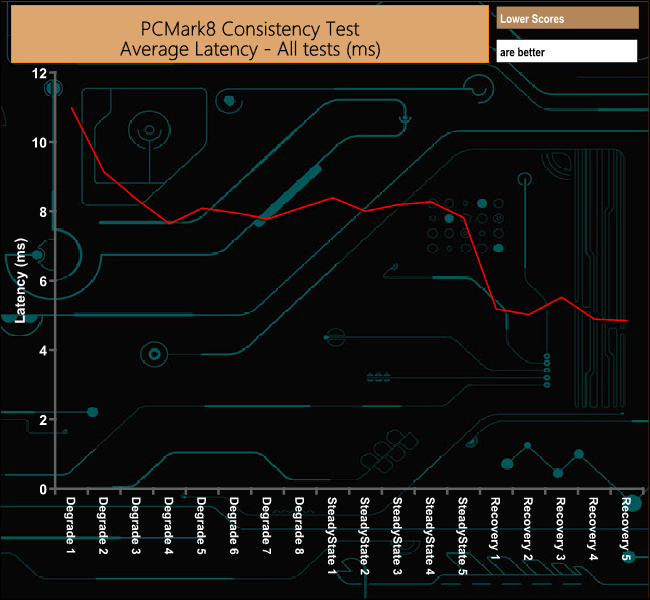
The WD Blue 3D NAND performs well throughout the various test cycles, not suffering too badly during the Degradation and SteadyState phases and it certainly recovers very well from the ordeal.
PCMark 8’s Consistency test provides a huge amount of performance data, so here we’ve looked a little closer at how the WD Blue 3D NAND 500GB drive performs in each of the benchmarks test suites.
Adobe Creative Cloud
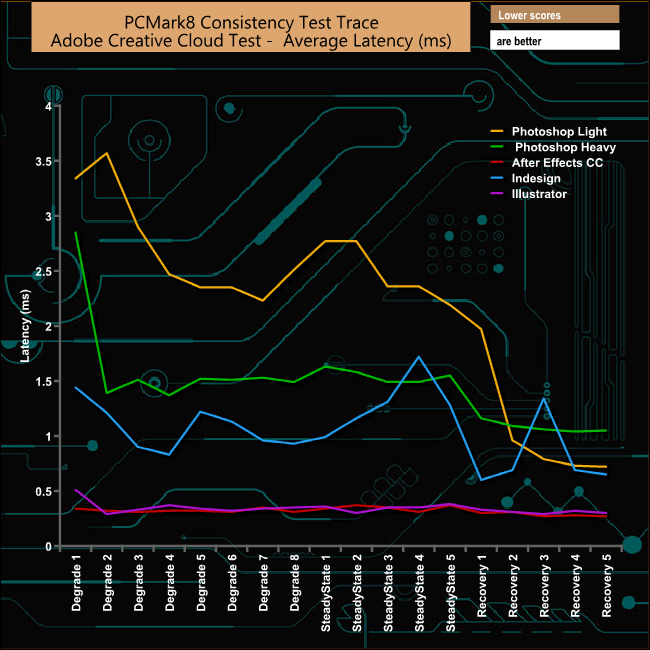
The most taxing test for a drive in the Adobe CC test runs is usually the Photoshop Heavy test, but the WD Blue 3D NAND deals with it well with not much loss in performance during the Degradation and Steady State phases and recovers very well indeed.
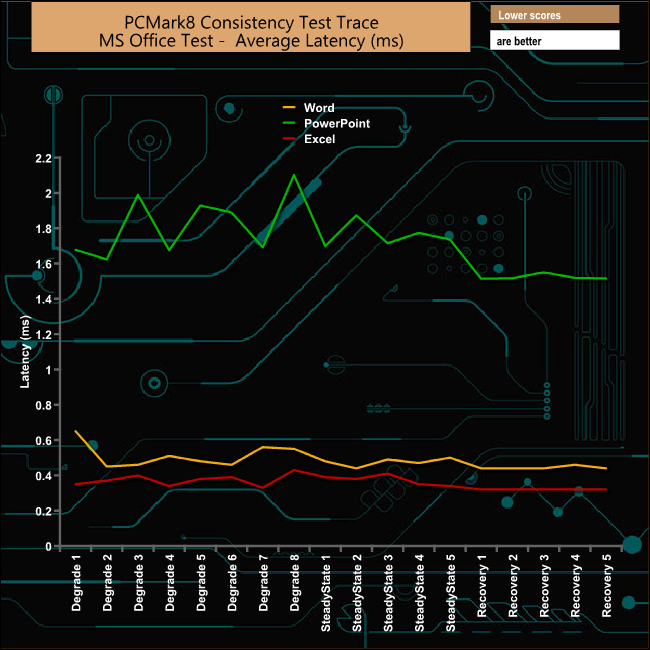
The performance in the MS Office test is somewhat erratic during the Degradation and Steady State but for all three applications the drive recovers well from the ordeal.
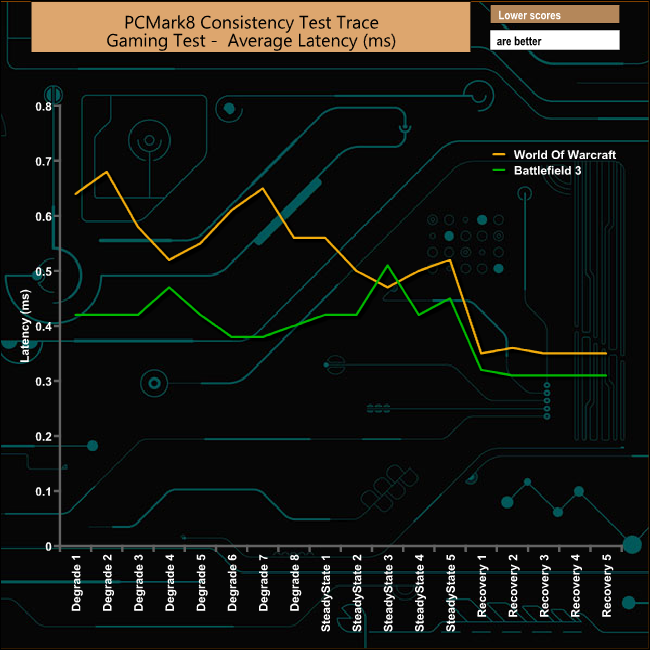
The drive does take a bit of a beating through the Degradation phases and the first couple of Steady State runs of the World Of Warcraft test, dropping down to 118MB/s on a couple of occasions, but it does recover well, averaging 231.72MB/s for the five Recovery runs.
Just like the Consistency test, PCMark 8’s standard Storage test also saves a large amount of performance data. The default test runs through the test suite of 10 applications three times. Here we show the total bandwidth performance for each of the individual test suites for the third and final benchmark run.
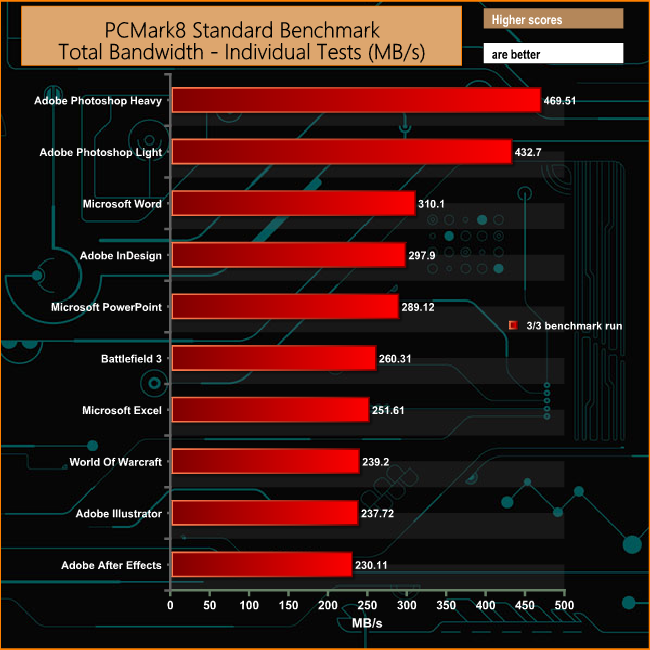
The WD Blue 3D NAND deals well with the two heavy duty Adobe tests, Photoshop Heavy and Light, particularly the former with a bandwidth of 469.51MB/s.
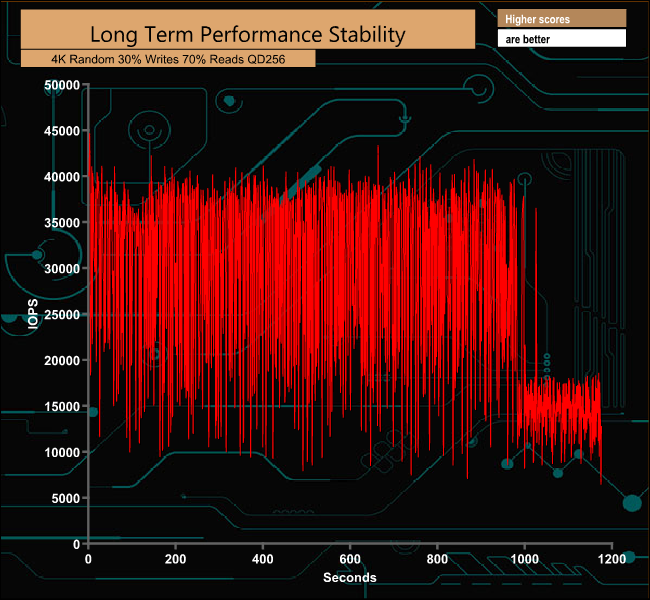
For the long term performance stability test, we set the drive up to run a 20-minute 4K random test with a 30% write, 70% read split, at a Queue Depth of 256 over the entire disk. The WD Blue 3D NAND 500GB averaged 28,079 IOPS for the test with a performance stability of 69%.
To test real life performance of a drive we use a mix of folder/file types and by using the FastCopy utility (which gives a time as well as MB/s result) we record the performance of drive reading from & writing to a 256GB Samsung SSD850 PRO.
60GB iso image
60GB Steam folder – 29,521 files.
50GB File folder – 28,523 files.
12GB Movie folder – 24 files (mix of Blu-ray and 4K files).
10GB Photo folder – 621 files (mix of .png, raw and .jpeg images).
10GB Audio folder – 1,483 files (mix of mp3 and .flac files).
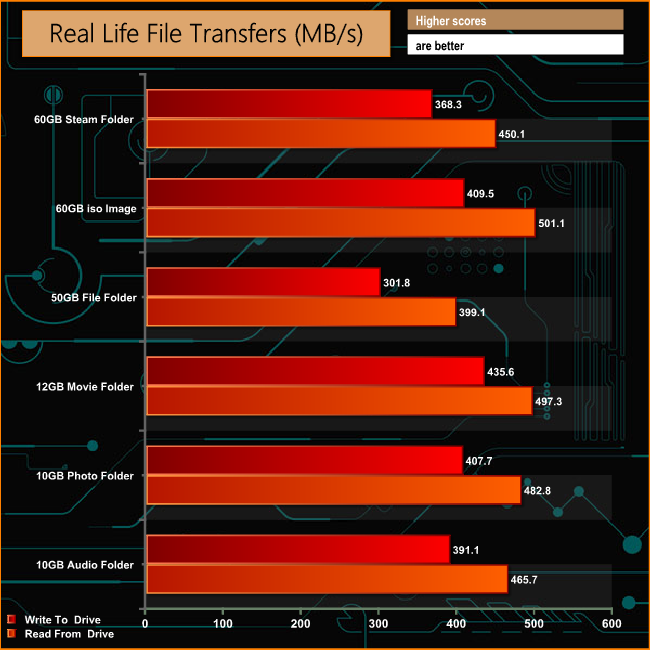
The drive had no real problems with our real life transfer tests although the performance did drop off while dealing with the small bity files in the 50GB File folder.
The original WD Blue SSD drive it would be fair to say, didn't cause much of a stir apart from the acknowledgement that WD had entered the highly competitive SSD market, but that changes with the new WD Blue SSD on the block. The WD Blue 3D NAND will really stir things up as it puts WD on the top table of SATA drive manufacturers – thanks to its use of leading edge 64-layer BiCS (Bit-Cost Scaling) 3D TLC NAND.
Quoted Sequential performance figures for the 500GB drive are 560MB/s for reads and 530MB/s for writes. When tested with the ATTO benchmark the drive exceeded WD's started figures with reads of 564MB/s and writes of 534MB/s. Random 4K performance is quoted as up to 95,000 IOPS for reads and 84,000 IOPS for writes. While we could match the read figures using the IOMeter benchmark producing a score of 97,078 IOPS, we couldn't match the write figure, the tested drive producing a write score of 56,711 IOPS.
The drive dealt with PCMark 8 Consistency tests very well including the Adobe Photoshop Heavy traces which usually stresses out drives but the WD Blue 3D NAND took it in its stride.
The Blue 3D NAND has improved and enhanced power efficiency compared to the previous generation Blue SSD. The quoted average active power rating of the original Blue 500GB was 70mW while the new drive's average active power is rated some 18mW lower at 52mW. When it comes to active read/writes, the 3D NAND of the new drive offers much better power efficiency than the 2D NAND used in the previous generation of drives. The quoted maximum rating for reads of the new drive is 2,050mW as compared to the 2,850mW of the old drive while write ratings have dropped from 4,000mW to 3,350mW.
SSD Dashboard is WD’s SSD management software which is available via download from the WD website. It has some useful features such as drive monitoring (how much capacity is being used and how, drive temperature and remaining drive life), a check for firmware updates and install them. There’s a useful built-in performance monitor that shows, in real time, how the drive is performing in 5-minute time slots in either MB/s or IOPS.
We found the WD Blue 3D NAND 500GB drive available to pre-order at Overclockers UK for £167.99 HERE
Discuss on our Facebook page over HERE.
Pros
- 64-layer BiCS 3D NAND
- Overall performance
Cons
- 3-year warranty is a little mean
Kitguru says: After the ho hum reaction to the original WD Blue and Green SSDs and the disappointment of the WD Black PCIe drives performance, WD now has a drive that could cause some major waves in the market, and with good reason.

 KitGuru KitGuru.net – Tech News | Hardware News | Hardware Reviews | IOS | Mobile | Gaming | Graphics Cards
KitGuru KitGuru.net – Tech News | Hardware News | Hardware Reviews | IOS | Mobile | Gaming | Graphics Cards


